Perusing the wide, pulsing halogen lit aisles of impeccably sterile Western grocery stores may seem appealing at first – each item in copacetic order – but the shiny veneer of having every fruit and vegetable at your fingertips year-round quickly flakes away, revealing mealy apples, soggy strawberries, and tasteless tomatoes.
 Instead, we’ve grown to love the Asian wet market – the renao chaos of it all as shopkeepers beckon passersby with a wedge of melon, a plump cucumber, delicate tufts of Shanghainese bok choy, a free fistful of scallions.
Instead, we’ve grown to love the Asian wet market – the renao chaos of it all as shopkeepers beckon passersby with a wedge of melon, a plump cucumber, delicate tufts of Shanghainese bok choy, a free fistful of scallions.
The aisle’s colors change with the rotation of the season, yet regardless of freezing rain or sweltering humidity, the same valiantly high stacks still line the narrow walkways, showcasing produce so fresh it’s still speckled in dirt from being unearthed just a few hours prior.

Vendors bundle in down jackets during winter, their breath leaving a wisp of white steam in the air as they call out the price – san kuai wu yi jin, song gei ni xiang cai.
Thick layers are swapped for the 'Beijing bikini' in summer, sweat dripping down foreheads just as condensation leaves a glossy sheen on aubergine skin of just-purchased, rotund eggplant, shopkeeper and veg alike – tummy out and exposed to the world.
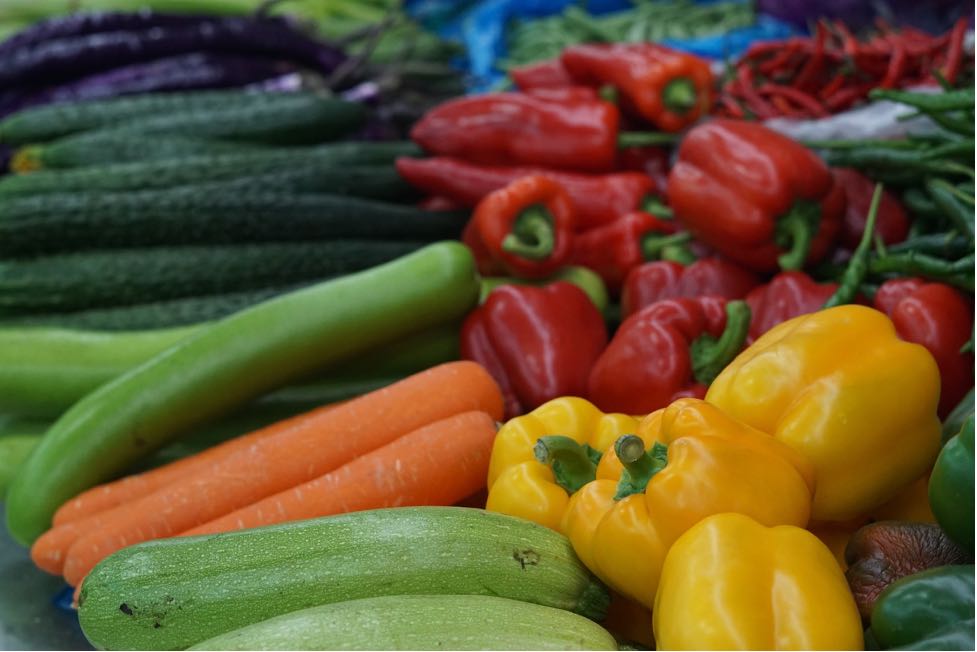
Swing by often enough, and you’ll start receiving cooking advice, “This type of bean is perfect for stir-frying with pork,” or “this shan yao pairs well with sweet blueberries.”
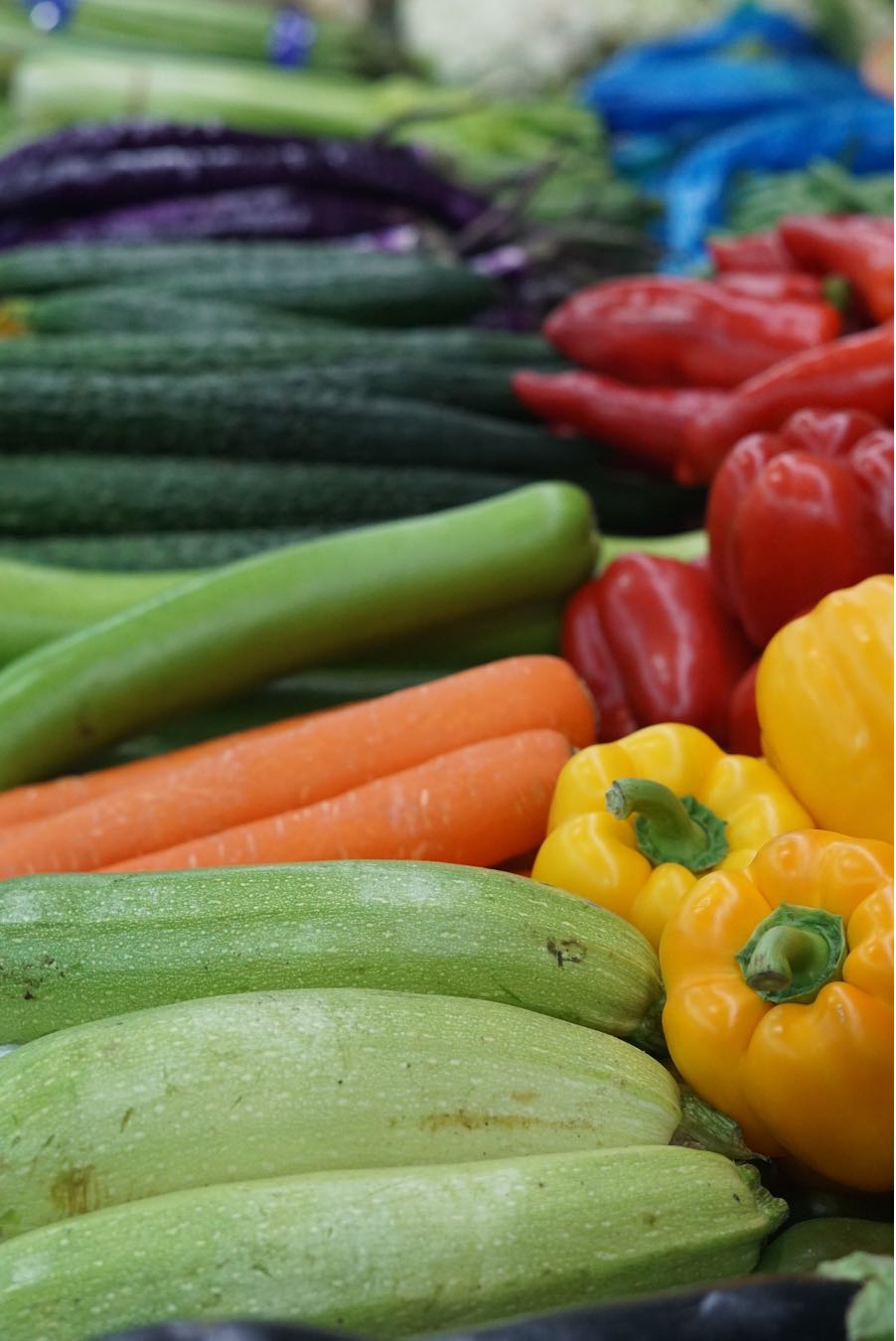
Sadly, a mix of COVID aftermath and the abundance of apps like Hema and Ding Dong have led to fewer wet markets, local vendors required to compete with vast supply chain networks and domestic-wide retail conglomerates.
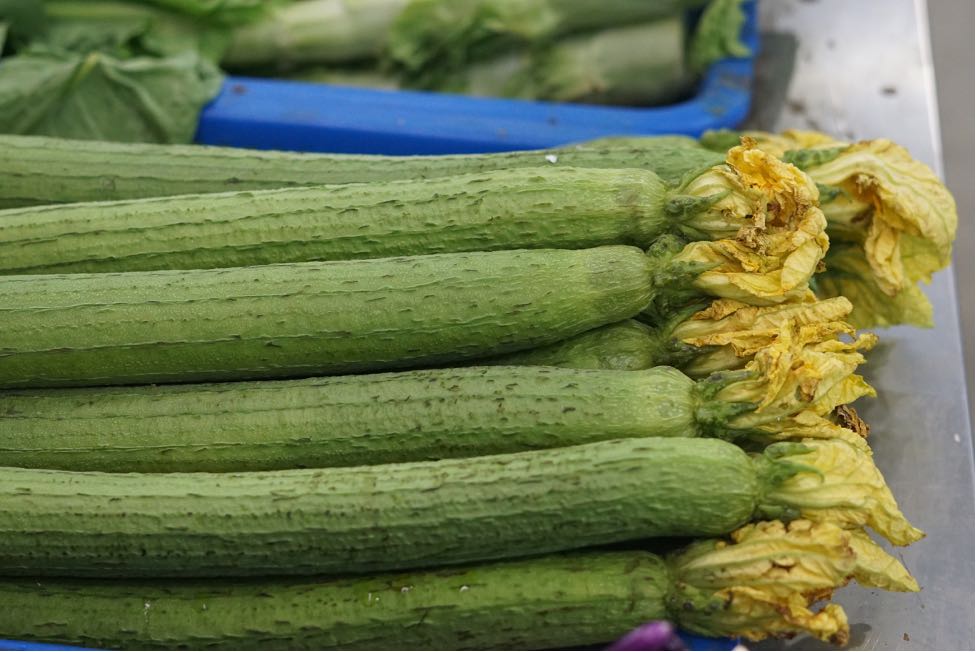
Of course, with eating only local, you sacrifice the convenience of having any produce you could ever want, regardless of season. But the upside far outweighs that, with the guarantee of fresher, sweeter, and more flavorful fruits and vegetables.
A gamble we are willing to bet on time and again.
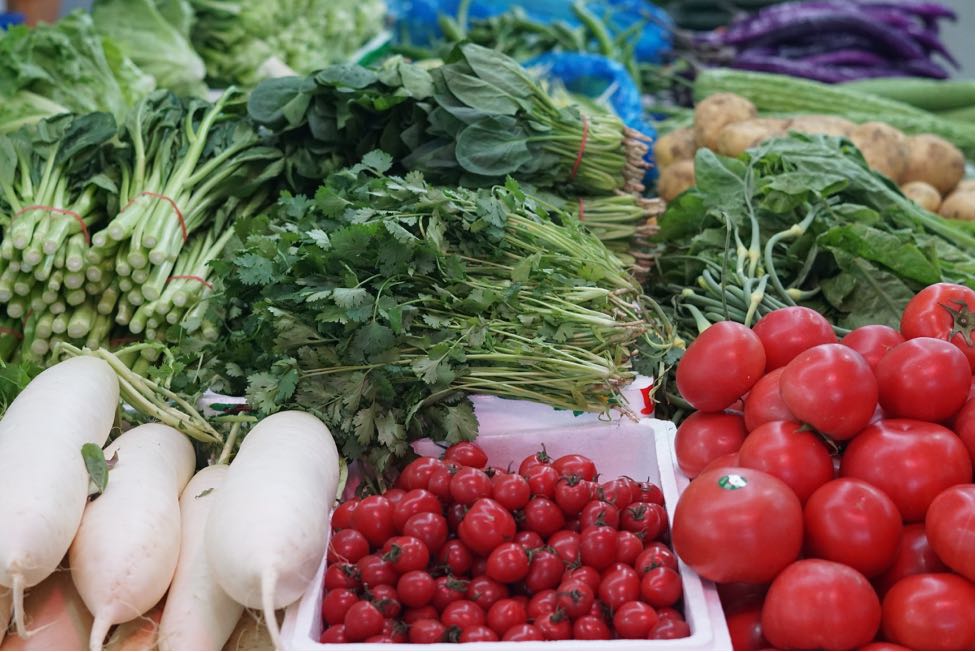
To foment this interest in cooking with what grows in our own backyard, here are six seasonal summer vegetables that you can start incorporating in your diet today!
Amaranth | Xian Cai | 苋菜

Craving a spinach salad one day, we came across amaranth, a leafy vegetable, similar to baby spinach in appearance except for its vibrant ruby-hued veins.
The verdant color of the leaves indicates a high iron content, while these greens are also packed with fiber to help reduce cholesterol and the risk of cardiovascular disease.
Most importantly, amaranth is known for its ability to reduce the effect of cell-damaging free radicals that can lead to cancer, along with the prevention of hair loss and improved skin-related issues like acne and eczema.
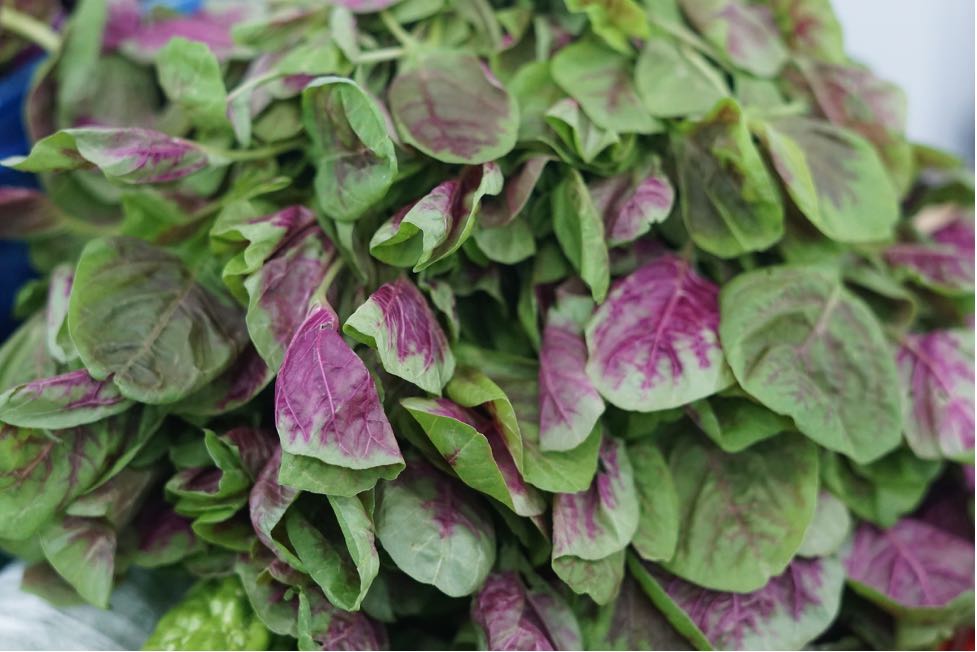
The tender leaves make excellent salad bases. Just trim the stems, wash and drain the leaves thoroughly, and you’re ready to go.
Amaranth is also ideal for stir-fries; because of their delicate nature, the leaves shrink when exposed to even just a few seconds of heat, so keep that in mind while portioning for meals.
Cook amaranth with other stir-fried veggies or by itself, and add it to warm grain-based salads for extra color and flavor.
For a vitamin boost in your morning smoothie, throw in a handful of amaranth, which will give the drink a silky smooth texture and a soft purple tone.
Asparagus | Lu Sun | 芦笋

Grab all the asparagus you can in the next few weeks, since this hearty green vegetable is nearing the end of its season by mid-July.
This nutrient-dense food has a high content of folic acid, thiamin, potassium, fiber, and vitamins A, B6, and C. Similar to amaranth, asparagus also contains essential amino acids that help to fight free radicals.
Asparagus is easy to cook; just snap off the thick, woody ends (about 2.5cm from the bottom), wash them, and roast them with some olive oil, salt, and pepper in an oven, on a grill, or in a wok/pan for a few minutes until the edges start to crisp and char.
When they are almost done, you can even hit them with a drizzle of sticky balsamic vinegar or shredded parmesan cheese for added flavor.
Asparagus are an optimal way to add healthy nutrients to any meal, and with a bundle usually selling for about RMB15 per jin (500 grams), you can’t afford not to!
Eggplant / Aubergine | Qiezi | 茄子
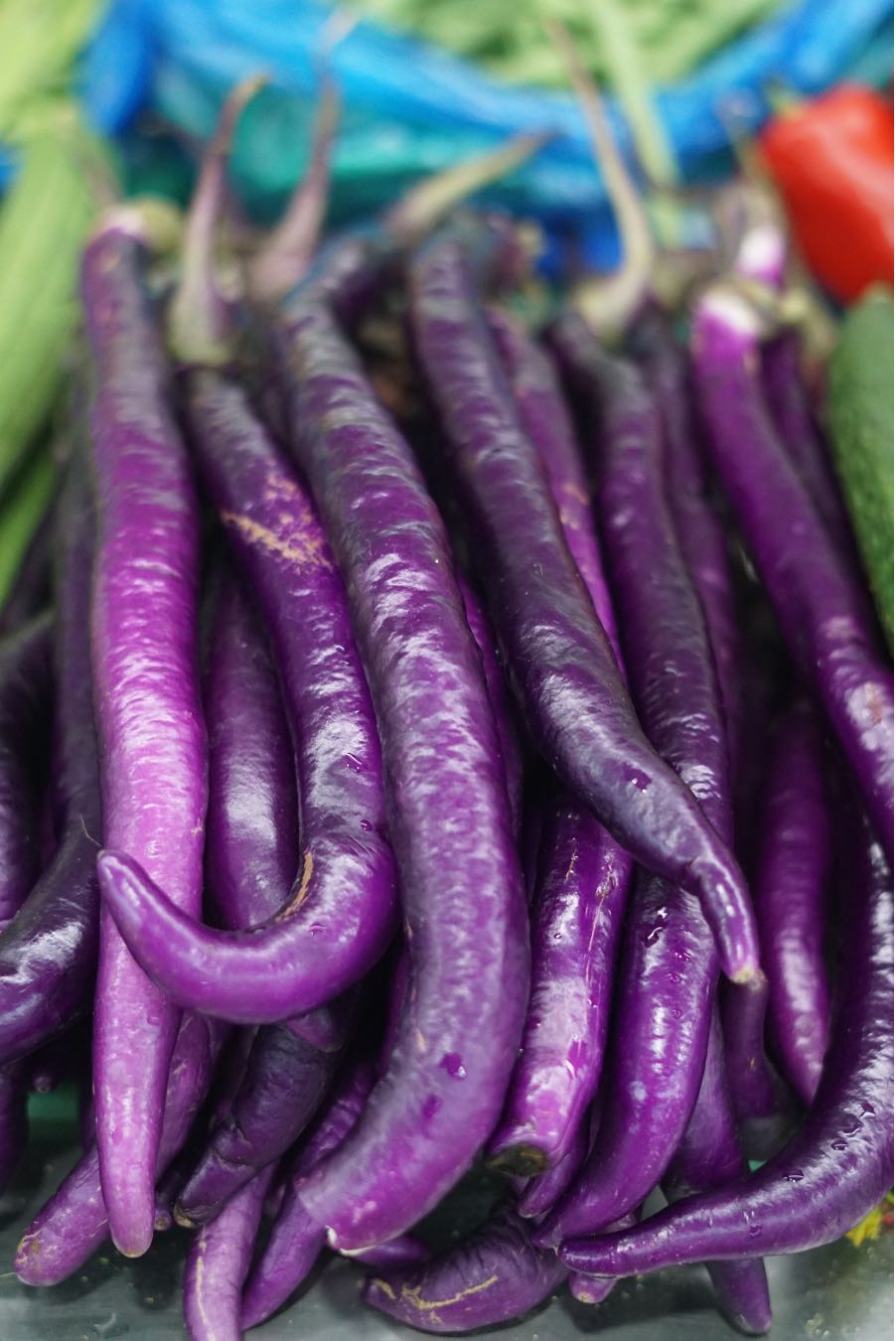
From fat and wide to long and skinny, there’s never a shortage of eggplant in this city.
While available year-round, these low carb, high fiber vegetables are at the peak of their season from July to October.
Eggplants contain a broad range of many vitamins and minerals spanning folate, potassium, and manganese.
One cup of eggplant contains only eight grams of carbohydrates – two of which are fiber – so snack all day long on this diet-friendly vegetable sans guilt.
Eggplants are versatile, ideal fodder for bulking up stir-fries, braising in sauces, throwing in soups, and charring on a grill. Roasting brings out its innate sweetness, caramelizing in a hot wok.
Make sure to cook the eggplant until tender, the smarmy center pulling away in shreds easily with the mere nudge of a fork.
A telltale sign of an undercooked eggplant is a spongy 'meat' coupled with a slightly bitter flavor. Avoid this with a longer cooking time.
Fava Beans / Broad Beans | Can Dou | 蚕豆
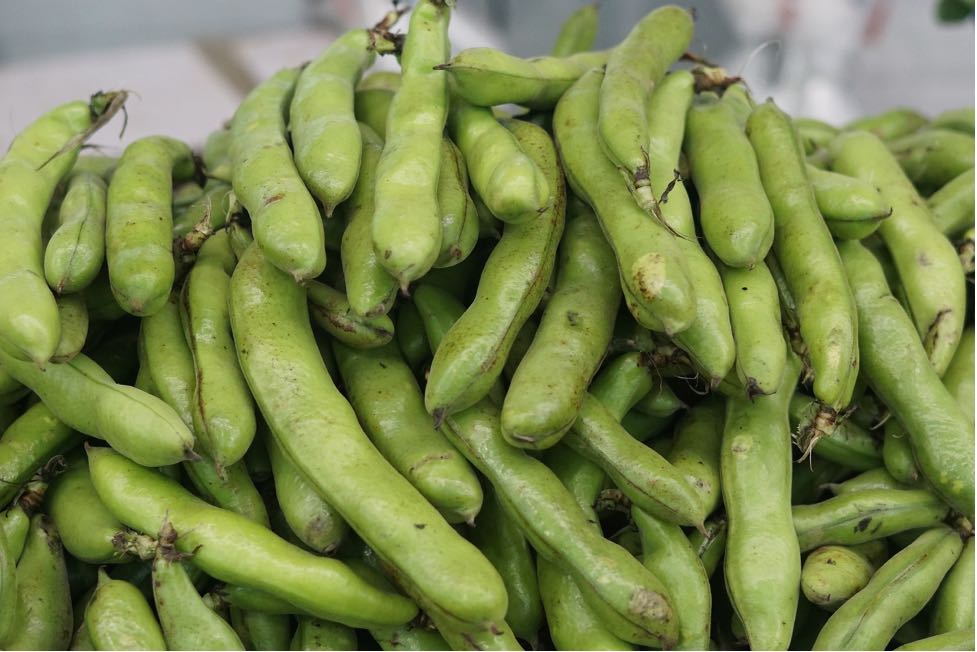
Fava beans are an ancient member of the pea family with a nutty flavor and buttery texture.
You can find them in any wet market during spring and summer; just look for what appears to be darker, bigger, and somewhat fuzzier green peas.
Although higher in calories than most other vegetables on this list, they are loaded with protein (eight grams per 100 gram serving), healthy fats, soluble fiber – ideal for energy metabolism, osteoporosis prevention, nervous system support, and healthy red blood cells.
If you’re a mom-to-be, fava beans are a stellar addition to your diet as the high folate content assists in brain and spinal cord development.
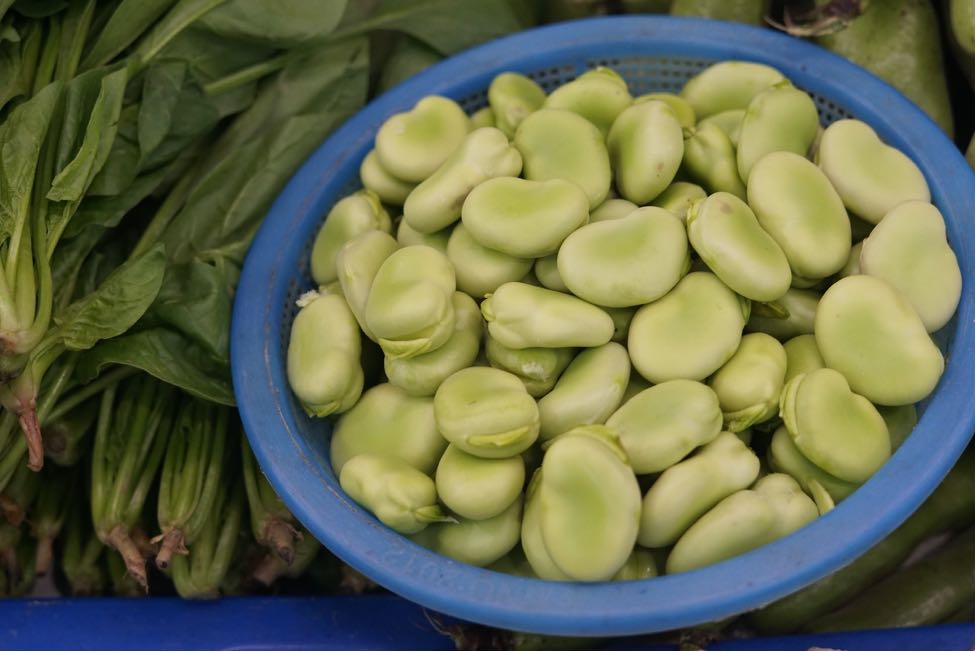
If you can’t be bothered with the mafan of de-shelling your own beans (do note, the tough, fibrous outer skin should be discarded), pre-shelled alternatives are also on offer at most wet markets for just a few kuai extra.
However, if you prefer to buy them still inside the shell, look for the green pods that are tight instead of bulging since the bulging ones are too mature and may leave you with a bitter tasting bean.
If the beans still have skin on them, blanch for 90 seconds, pop them in an ice water bath to stop the cooking process, and then peel away the skin.
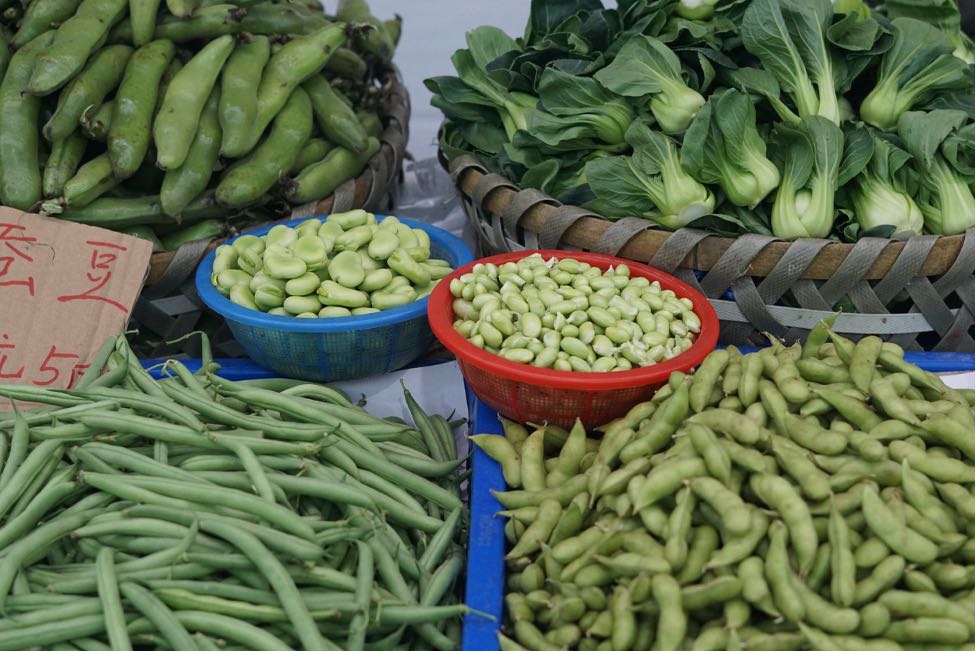
Fava beans make excellent dips when blended and are a fantastic protein-boost to any salad.
Or, sauté them with garlic, herbs, and seasonings of your choice for a healthy side-dish.
Mushrooms | Mo Gu | 蘑菇

Yunnan, China – known as the 'Kingdom of Mushrooms' – is home to more than 600 species of mushrooms, of which 20-30 are of an edible variety that don’t grow anywhere else in the entire world.
While most of Yunnan’s rarest shrooms don’t make it outside the province, Shanghai still boasts an impressive array – from ordinary button mushrooms, shitakes and enoki mushrooms to portobellos, king mushrooms, wood ear mushrooms, and more.
Yunnan's rainy season begins in mid-June – which uncoincidently coincides with the time mushrooms flourish – making it prime season to delve into anything from jizong (or termite) mushrooms (鸡枞菌), chanterelles (鸡油菌), and matsutake (松茸) to boletus (牛肝菌), qingtoujun (青头菌) and ganbajun (干巴菌).
Mushrooms are low in carbohydrates but high in B vitamins, fiber, and even protein.
As an anti-inflammatory food, mushrooms contain high levels of beta-glucan compounds that keep immune cells strong. Similarly, mushrooms contain high levels of antioxidants.

Mushrooms are one of the easiest vegetables to cook because they can be paired with almost everything, or even enjoyed on their own; just wipe them thoroughly with a damp towel and add them into any recipe.
Toss them with pasta or grains, stir-fry them in a hot wok, stuff them with vegetables and roast them, add them to stews, grill them, or braise them in sauces.
There’s no wrong way to eat a mushroom, and they lend a rich umami boost to any dish.

Other seasonal veggies worth springing for: Chinese toon (xiang chun 香椿), malantou (马兰头), spring bamboo shoots (春笋), clover (cao tou 草头), wild rice shoots (jiao bai 茭白), towel gourd (si gua 丝瓜).
[All images by Sophie Steiner/That's]





















0 User Comments